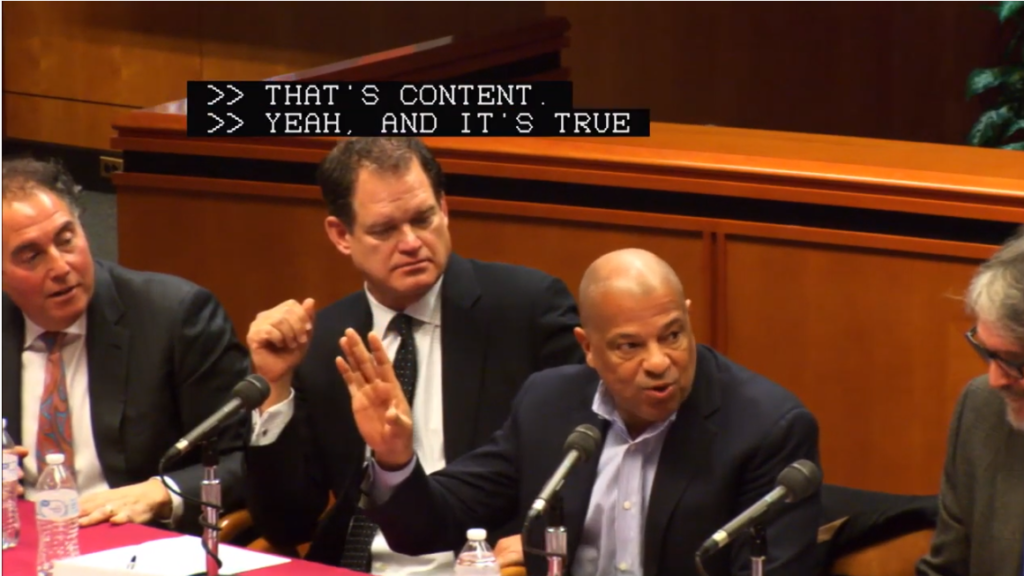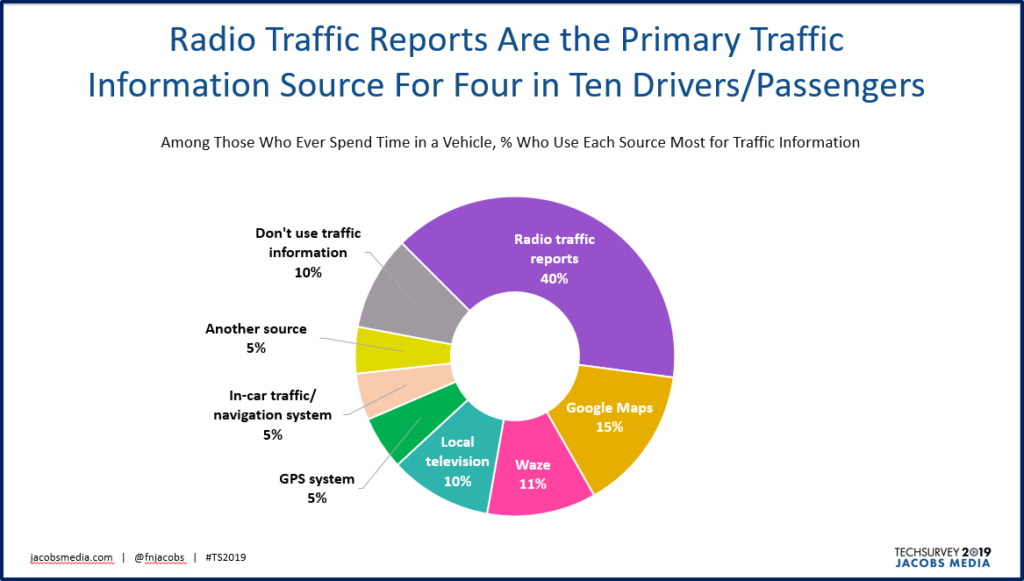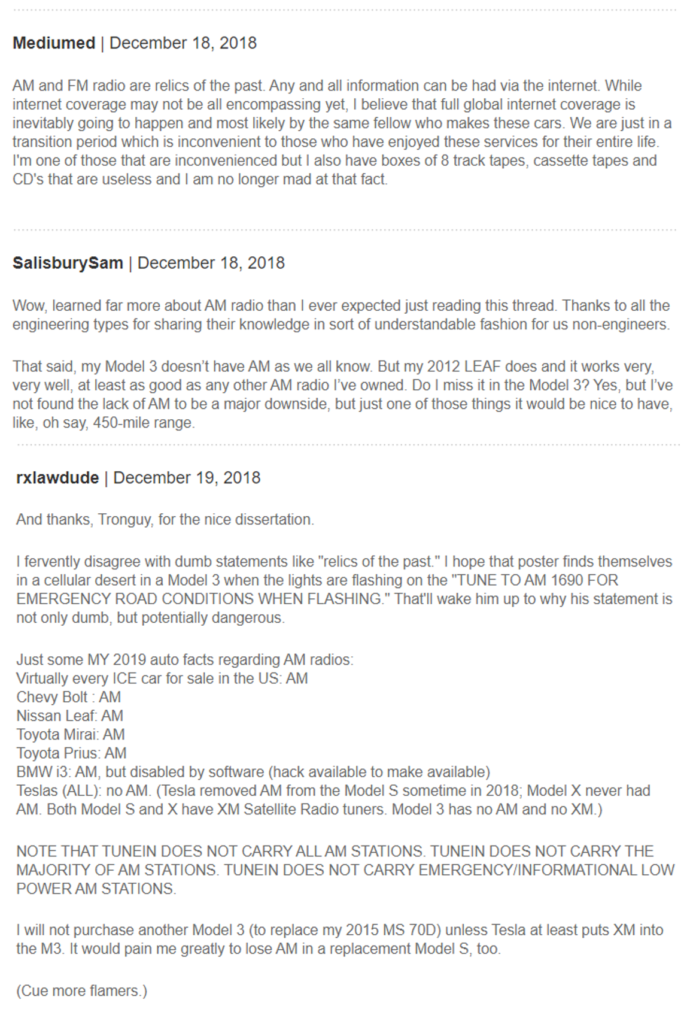
Over the years, broadcast radio has taken its share of lumps at the hands of digital media. FM radio – once the hippest form of audio on the planet – now has to co-exist with streams, satellite radio, podcasts, and other audio formats now part of a growing renaissance. And crowded marketplace.
So, how well does FM hold up versus its competitors in 2020?
Depends on who you ask and how you’re making your judgments. Are we talking personalization? Or commercial quantity – or scarcity? Music curation or playlist services? On-demand versus real-time?
One of the downsides of the connected car technology for radio broadcasters is the proliferation of these myriad new platforms, often accessible through a Bluetooth connected smartphone. And this desire for in-car connectivity is growing with each passing year, finding its way into more and more dashboards as automakers make it standard equipment.
But the other side is the realization that when you listen to “Bohemian Rhapsody” on an FM station and A:B it with satellite radio or your average stream, the frequency modulated signal – even with a Voltair hitched to the air chain – is your best choice – by far. The quality difference is more than apparent to the naked ear.
How FM radio will fare moving forward as more cars are connected and more audio is directly accessible from a voice assistant named Siri, Alexa, or Hey, Google remains to be seen. We’re already seeing strong signs in our Techsurveys that broadcast radio will continue to be challenged in its #1 listening location – the car.
But then there’s AM radio.
Those of us of a certain age may have grown up with only AM radio, or during those early years when FM burst on the scene and you had to buy a “converter” to receive those early stations while you drove.
Even as FM began to make cultural waves, the big jocks, the mega-budgets, and most of the money was still owned by AM radio stations. Even today, heritage AM stations in many markets – despite struggling ratings – continue to post impressive billing and revenue numbers, often driven by tradition, habit, or content services still unique on either the AM or FM bands.
But to say that AM has hung in there is a misnomer – a hopeful statement no longer backed by logic, statistics, or reality.
And as we see more and more in our Techsurveys, the demand for AM radio by buyers or lessees of new vehicles continues to wane. And not surprisingly, we’re beginning to see auto manufacturers leaving AM radio on the cutting room floor, often with the excuse the electric cars aren’t compatible with good old amplitude modulation radio.
When we ask prospective new car owners about their “must have” media options, FM continues to lead the pack, while only three in ten indicate an AM radio is very important in their next dashboard.

Techsurvey 2019 was fielded exactly one year ago, and the newest version of the world’s largest radio research study is in the field right now. A betting woman would predict the desire for having AM radio in a new car dashboard is continuing to erode.
But forget about what consumers say. Listen to what radio’s ownership his saying. Late last year, I moderated an FCC symposium about the state of broadcast radio. The panel was populated with a number of senior executives, representing large, medium, and small market broadcasters. And when the subject of AM radio came up, they were all on the same page.
Citing a subpar listening experience, declining ratings, and nearly zero interest in the purchase or sale of AM stations in the brokerage community, our expert panel pretty much scoffed at the prospects of a bright future – or any future – for AM radio stations in the current listening and regulatory environment. Still, there were opinions on both sides of the AM radio fence.

Reporting on the panel in Radio World, Randy L. Stine quoted both Hartley Adkins (iHeart) and Alfred Liggins (Urban One).
Adkins expressed concern about AM’s future, but noted his company is still heavily invested in the medium through its stations, as well as franchise syndicated talk personalities:
And yet, while watching yet other round of football games last weekend (sorry to my friends in Wisconsin and Texas), I couldn’t help but notice this new Jeep commercial – where both those iconic 4×4 vehicles and AM radio are the stars:
https://www.youtube.com/watch?v=e81jVmBHryA
Channeling both radio school closing reports and traffic updates, the spot is a reminder to both Jeep and AM radio fans about what gets America through its toughest winters. I have no clue who Jeep’s target driver is (and it probably varies by model), but the fact radio – much less AM radio – is at the center of a highly visible national ad campaign says something.
I went back to the same Techurvey quoted earlier in this post. We also ask our sample of (mostly) core radio listeners their primary source of traffic information. While Google Maps and other tools have become more important these past several years, accessing this information on the radio is still the primary way our North American sample finds out about road conditions:

As you might expect, the older the respondent, the greater propensity to use the radio as their primary traffic source. Gen Xers, Boomers, and members of the Silent (Greatest) Generation are progressively more apt to rely on AM and FM radio stations for traffic information.
Slowly but surely, automakers – especially using the excuse of the difficulty of properly grounding AM radio in electric cars – are quietly gravitating away from an amplitude modulation option in their vehicles.
Tesla has been the most visible example of this. After all, they are the company that owns the position for combining innovative technology with transportation. And somehow, they want us to believe they are able to engineer a self-driving Autopilot feature, built-in smartphone charging docks, digital vent controls, and on-demand farting sound effects (I kid you not). But somehow, they cannot make AM radio work in their electric cars.
This topic came up on a Tesla forum (on their website) where (mostly) disgruntled owners lamented the absence of AM radio, while discussing workarounds that included HD2 stations, streaming, and even bringing a portable AM radio into the cockpit).

There are a lot of moving parts here. AM’s signal and sound shortcomings, added to the growing lack of competitive stations, make the platform increasingly difficult for broadcasters to support. And of course, millions of consumers have abandoned AM radio for other options, while young people – as Alfred Liggins asserts – have no idea what it is or where to find it.
But on the other hand , some well-heeled Tesla owners are wondering why they can’t hear a sporting event, a favorite talk show host, or a still-relevant AM radio station (like KNX, WFAN, etc.). while driving one of the coolest vehicles on the road.
There are no simple solutions to the AM conundrum, as we poignantly heard from broadcast executives at the FCC symposium, many of whom own several of these stations.
Old habits die hard. And you wonder how that Jeep creative concept – leveraged on AM radio traffic reports – made it out of the storyboard stage, ostensibly in a room full of Millennials agency pros.
Maybe the creative director listens to WCBS, NewsRadio 880.
You can watch the entire FCC panel here.
- 5 Lessons For Radio From The Apple Watch - May 5, 2025
- DJs And Baristas: Can They Save Their Companies? - May 2, 2025
- Radio’s New Audience Equation: Z Over Y = Trouble - May 1, 2025




The same advertising geniuses also put hangup clicks and dial tones in commercials where cellphones are being used. I can’t tell you the last time I heard either at the end of a phone conversation.
Like you said: old habits die hard.
They that do, Alan. Thanks for the comment.
In the late model car I purchased a year ago, AM radio is on the audio menu, but the sound quality is severely muffled. Since I travel through the hills between San Francisco and Santa Rosa, the FM signals flutter out, so one has to switch between the clarity of the news/talk/sports stations FM signals to their AM counterparts to listen to the same station. Both KCBS and KNBR have FMs that used to be KFRC and KFOG, respectively. A:B between them and it’s like the voices are totally different people. Was this just a low-priority in the design for audio quality of the AM tuner? Definitely doesn’t help.
That sound quality issue aside,
in Santa Rosa, KSRO, our heritage AM station also has FM translators. In the fire disasters and subsequent PG&E blackouts of the last few years, people rediscovered their transistors as cell towers melted and charging devices limited. IMO, AM radio should be required as standard equipment in vehicles for local disasters.
Paul, the NAB’s Gordon Smith told the story of a panel he did with Gary Shapiro, CEO of the Consumer Technology Assoc. Gary got caught in those same fires, lost cell service and electricity. But he was able to run out to his rental car and get updates ON THE RADIO. And doesn’t it seem like there are more “local disasters” with each passing year? Thanks for the comment.
My wife listens to sportsradio 66 WFAN. We live in the suburbs so we can only listen on 66 AM and not 101.9 simulcast and the audio sounds like trebly phone audio.
Yeah, a common complaint. Ultimately, you may end up choosing the stream for WFAN. An Amazon Echo might be the answer to being able to simply listen to WFAN at home.
Or you might try a better radio. C Crane EP Pro has great audio on AM and FM, and excellent reception on both bands.
I like my cell phone, but I love my radio!
Appreciate it, Rob.
Fred, in the end I think all stations need to be up on all platforms at all times. Broadcast (whether FM or AM) without streaming channels such as mobile, smart speaker and of course desktop/web player, risks being left out of today’s connected dashboards. The “good” news is if you’re an AM and you’re streaming, the Tesla owners or spoken word fans can hear you pretty much anywhere today.
I spoke with a large auto dealer (Chevy) who told me his #1 in-dash problem/complaint from customers is “just give me a knob on the damn radio.” I think the tech guys are WAY ahead of their customer base. What’s the saying? There’s only one thing worse than being 1 step behind; being 2 steps ahead.
Thanks as always for your blogs!
Just back from CES – where many are 20 steps ahead – I totally empathize with your car dealer friend (and Chevy’s interface is pretty damn good). You can see how the automakers struggle with leading and following when you talk to them in Vegas. Meantime, radio companies need to acknowledge their content be everywhere – with a great experience. Thanks, Jack.
You really have to be of a certain age on order to demand that AM be included in your dash, and I notice that my kids (in their 30s) have no issues with the display screen based controls for their in-car entertainment. I also can’t help but notice that you can drive across the entire reach of a translator in about 15-min.
“A certain age” is an understatement, Thom. Thanks for the insights.
AM radio does not have the frailty of FM (line of sight) and digital (even smaller footprint). In times of trouble, AM will get you through.
Where are the poobahs, the big shots, the major players, maybe some first responders? and yes, especially the NAB! when it comes to Radio!!??
No account. No credit card. No problem. Radio is still free.
Your Radio Radical,
Uncle Lalo
Lalo, your grounding and common sense are always welcome here. Thanks for engaging.
I will sound like old school but here goes. Whenever I listen to a ball game (baseball, football) on FM radio vs AM radio..it doesn’t have the same punch or vibe for me. Sure the AM radio sounds muddy compared to the stereophonic sound of FM but how many times have you heard a sports broadcast in FM actually using the stereo capabilities. (i.e. one broadcaster in left channel…the other in right..)
??? AM does have a place.
My “old ears” are similar. FM PBP sounds TOO clean and not gritty enough. Not sure a 20 year-old would agree.e Then again, not sure too many 20 year-olds are following baseball. Thanks, John.
The issue with AM and FM vs new in-car media is listener control and accessibility. While “Bohemian Rhapsody” on an FM station may sound better than streaming (debatable), the fact is that when one wants to hear Queen, it is becoming much easier to access the song via the Apple/Android/Alexa device NOW rather than waiting for a DJ to schedule the song. The best argument for broadcast radio is local news and weather, live sports and compelling, topical commentary. Eventually that content will be readily available and accessible via 700-854 MHz, 2.4 GHz, 5 GHz up to 28 GHz. Content is content, regardless of the physical transport. The advertisers will soon find most of their customers have abandoned broadcasting and send all their advertising dollars to Google Adwords. Because the plight of newspapers is soon to be visited upon AM-FM, here is my AM-FM revitalization proposal: NOAA should shutter 162.400-550 MHz and let the local radio stations deploy the robotic weatherman.
Mike, there’s decidedly more value to having “Bohemian Rhapsody” – or “Someone to Love” or “Crazy Little Thing Called Love” or “Under Pressure” – being played by a radio station that is free. And the quality comparison I made was to satellite radio, an obvious quality comparison. I think most in the radio business would push back with a “Not dead yet” chant. I’m happy to be a part of that group. thanks for your taking the time to read our blog and comment.
Since I now work for a BMW dealer, I’ve tried to get an answer from BMW corporate regarding AM in the EV’s. The official answer is, as you said, AM isn’t compatible. The fact is, it’s a little more expensive to make it work properly, but the ROI isn’t there for most of the models. That said, the 2020 5 and 7 Series Hybrids still have an AM radio. The target demo for those models is older though. It’s extremely rare for us to hear from an EV client of the other models (esp i3 clients) that they miss the AM radio. As for the satellite audio comparison, SXM can easily adjust each channel’s bandwidth individually if they want. They’ve obviously determined it’s more important for their business model to have more choices and lower quality than pristine audio.
I think you absolutely nailed “the problem,” for Phil for BMW (and Tesla). It is a conscious decision, driven partly by price but also image. “We’re too cool to have an AM radio in our cars” may be part of the deal – sadly. Thanks for the perspective.
I’m surprised you omitted mention of the current FCC NPRM regarding the possibility of all-digital (MA3) broadcasting by AM licensees. Now that most new cars have HD Radio receivers, this could truly rejuvenate the band, as demonstrated by WFFD-AM 820 kHz in Frederick MD.
I have a lot of respect for the HD Radio team and what this technology could mean for AM. I would amend your comment to more new cars are equipped with HD Radio. While the numbers are growing, we’re still looking at a lot of older vehicles on the road, especially given the average car is on the road 12 years. I’m not trying to rain on your comment, John, but huge penetration (not to mention adoption, education, and usage) will has a long way to go. Thanks for the comment.
As already mentioned C Cranes latest EP PRO radio is as good as it gets on AM and FM . Jay Allen rates it 5 stars which only a very very select few achieve . The only other radio’s that rate 5 star’s on both AM and FM is the older Panasonic RF 2200 and the C Crane CC radio 2E and the CC radio 3 but those latter two radio’s have a long long history of the LCD screens and buttons crapping out starting around the 2 year mark going forward.
The 2E model and the CC radio 3 are identical except for Bluetooth capability and the 2E has had a horrific longevity record so most are avoiding the 3 for good reason.
It’s become such a big problem that most these days choose the outstanding EP PRO which doesn’t have those issues.
I love AM radio the most, FM not as much . DXING is a passion for millions of people it’s just really enjoyable to engage in so I hope AM continues on long into the future .
Thanks, Fred .. Good article. Good information. I too hope that radio, both AM and FM hold on, adapt, and grow into the future. I enjoy a little AM DXing from time to time, and to this day, the fact that a little plastic box with knobs, circuits and wires can pull sound out of thin air, from hundreds of miles away, is still somewhat miraculous to me.
-Chris
The technology – seamless and elegant – always amazes me, too. Thanks for the comment.